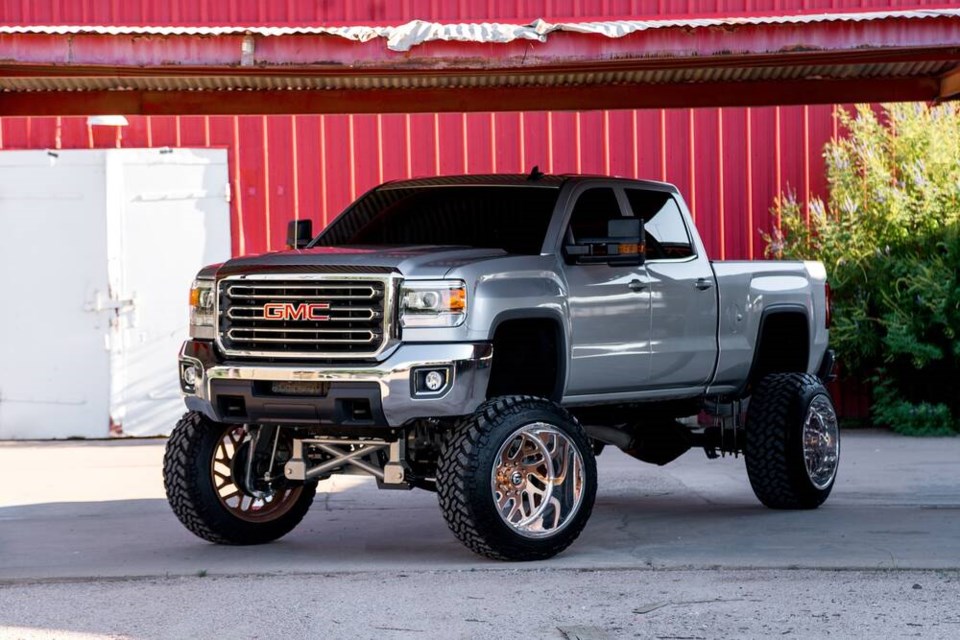I had one pull up next to me in a parking lot the other day. The ground shook, the sun was blocked out, as the driver of what resembled Darth Vader’s Imperial cruiser took two attempts to manoeuvre into the adjacent parking space. It was one of those jacked up 4X4 land dreadnoughts with tires the size of an old timey mill’s water wheel.
Loud, gas guzzling and decidedly unmanoeuvrable in an urban environment, that thing cannot possibly be safe, was my thought at the time. And some research later showed that I was probably right. Of course, there’s a distinction between customized high-lift 4X4s and larger passenger trucks and SUVs. But in terms of road safety, collisions between smaller and larger vehicles are a growing worry.
Back in 2017, a Saskatoon woman complained to the media that she was nearly killed in a collision with a large pickup truck when the truck’s much higher bumper rode right over top of her car’s hood and slammed into her front windshield, missing her by inches. Her car sustained $13,000 damage and was written off.
She’s not alone in her concern. Large high-grilled SUVs and trucks cause more fatal injuries to vulnerable road users such as pedestrians and cyclists than their lower-built passenger car contemporaries. The overall mass of a large truck’s or SUV’s front end coupled with its greater height creates a different form of impact when striking the human body in a collision.
During collisions, passenger cars and smaller SUVs strike the lower part of the body i.e. the legs. Impacts at lower speeds tend to see the body roll over the top of the hood, lessening the overall impact from the car. Not saying this is a good thing, but it’s preferable to a large-truck strike where the pelvis, torso and even the head may be impacted directly.
As the popularity of SUVs and trucks continues to grow in North America, so does its effect on crash statistics. In 2020, the U.S. Insurance Institute for Highway Safety found that while pedestrian crashes still most frequently involved cars, fatal single-vehicle crashes involving SUVs striking pedestrians had increased 81 per cent from 2009 to 2016, more than any other type of vehicle.
In 2013, Consumer Reports called a head-on crash between cars and SUVs “an unequal contest.” Their study found that the odds of dying were 7.6 times higher for the driver of a passenger car who collides with an SUV. Even when a particular car had a higher crash rating than the SUV it collided with, the car driver was still four and a half times more likely to die than the SUV driver.
There’s no question that, particularly for large people, the big truck is more comfortable. Their commanding height usually offers an extended view of the roadway and traffic. But it’s puzzling to me that there is still no tangible restriction on passenger vehicle bumper height in B.C. Saskatchewan has mandated that no passenger vehicle bumper can be higher than 750 mm, which is a generous 30 inches. I can find no such rule for B.C. The only references to bumpers state that they need to be firmly fastened to your vehicle, not have any loose or broken pieces, nor any sharp or ragged edges.
The closest regulation restricting vehicle height seems to lie in the rules around head and tail lights. Headlights, or headlamps as they are still anachronistically referred to in B.C.’s motor vehicle act, can’t be less than 56 cm (22 inches) in height and no more than 1.37 metres (54 inches) in height.
The headlights on the BroDozer that parked next to me were at my shoulder height, which I figure is around 62 inches, with its bumper height proportionally just about as high. Woe betide the driver of a Toyota Prius or the pedestrian colliding with that behemoth.
Consumer Reports also found that the hood height of factory manufactured passenger trucks has increased around 11 per cent since 2000 and that some new pickup models have increased their weight by 24 per cent between 2000 and 2018. This means that there are more heavier vehicles with less immediate front end visibility out there today. This ties into a growing body of research which indicates that the growing size of pickups and SUVs could be contributing to the deadliness of crashes, particularly against smaller vehicles, cyclists and pedestrians.
Environmental concerns are now rapidly shaping the automotive industry. As we mainstream electrically or hydrogen powered vehicles, government regulators and industry leaders need to take a step further and incorporate safety features in the “re-imagined” passenger vehicle that limit these deadly size and height disparities.



